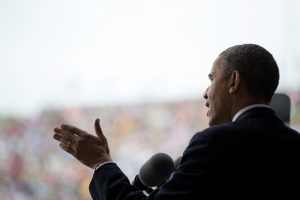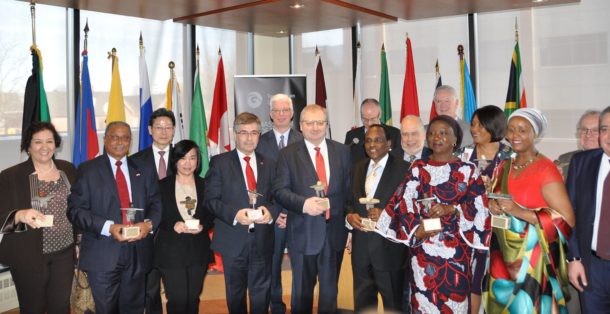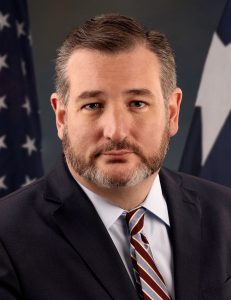Bill Bredesen, dpa-international.com image from
image from
With Chinese investment in the region set to rise dramatically in the coming decade, some question whether the US is doing enough to protect its influence there.
Singapore (dpa) – The conspicuous absence of Donald Trump at this week's summit of South-East Asian leaders in Singapore has raised questions about how committed the US president's administration is to the region.
Amid Beijing's increasing assertiveness and an ongoing trade war between the United States and China, Trump's decision not to attend the ASEAN Summit – and this weekend's APEC forum in Papua New Guinea – has been interpreted as a more hands-off approach to the region compared to his predecessor Barack Obama.
But analysts say such criticism of Trump's engagement – or perceived lack thereof – may be out of proportion to the reality on the ground.
"The American business and commerce presence in South-East Asia has never been stronger," David Shambaugh, a visiting senior fellow at the ISEAS-Yusof Ishak Institute in Singapore, wrote in an analysis in the institute's "Trends in Southeast Asia" series in July.
The US remains "deeply engaged in the [region's] security and military domains" and "maintains a robust series of public diplomacy [JB emphasis] programmes," he added.
"I think the US reputation will, in fact, not be terribly damaged" by Trump missing the ASEAN and APEC meetings, Shambaugh told dpa this week.
"But it does feed into the narrative about the US being an absentee power," he added.
Others say Trump's tough stances on China may actually resonate with ASEAN countries – even if the leaders of those countries do not say so publicly.
"While Asian governments, businesses and consumers might well share US concerns about Chinese behaviour … only the Trump administration … [has] been willing to take those concerns to the world stage,” said Curtis S Chin, former US ambassador to the Asian Development Bank and now the inaugural Asia fellow of the Milken Institute, a non-partisan economic think tank.
Chin cited concerns such as intellectual property theft, forced technology transfers, restricted access to Chinese markets, lack of respect for international rules and norms, and efforts to limit freedom of navigation in international waters and skies.
"With or without Trump in Asia [this week], the United States clearly remains an Indo-Pacific power," Chin told dpa.
"Even more critical than participation in summit pageantry will be continued US diplomatic, political and economic engagement if the call for a free and open Indo-Pacific region is to be heeded," he added.
Meanwhile, China is ambitiously seeking to expand its influence among its south-eastern neighbours. Trade volume between China and ASEAN countries reached 442 billion dollars in 2017.
As China's Belt and Road Initiative moves ahead with construction of high-speed railways linking Kunming, the capital of its southern province of Yunnan, with mainland South-East Asia, the country's long-term vision of an interlinked Asia is fast becoming reality.
Chinese investment in ASEAN countries is expected to nearly triple between 2018 and 2035, rising from 181 billion dollars this year to 500 billion dollars in 2035, according to the ASEAN+3 Macroeconomic Research Office (AMRO).
The US-China trade war will likely accelerate this process, said Chaipat Poonpatpibul, lead economist for AMRO.
"The tensions will likely incentivize firms in China whose exports are affected by higher tariffs to relocate to the region," Chaipat told dpa.
China is also working to secure a new regional free-trade agreement called the Regional Comprehensive Economic Partnership (RCEP), a deal that would encompass one-third of world trade and include almost half of the world's population.
The proposed Beijing-led deal gained new life after Trump withdrew the US last year from the 12-country Trans-Pacific Partnership (TPP), which Obama had negotiated prior to leaving office.
A revised version of the TPP has also moved forward without the US.
Japan, the world's third-largest economy, is said to be interested in joining RCEP, along with India, South Korea, Australia, New Zealand and all 10 ASEAN countries.
Chinese Prime Minister Li Keqiang said on Tuesday in Singapore: "With rising protectionism and restraints on free trade, we need to advance RCEP negotiations."
"It sends a signal that we stand by free trade and are determined to push it with real action," Li added, saying he hopes to complete the agreement in 2019.
ASEAN is forecast to become the world's fourth-largest economy by 2030, Singapore's Prime Minister Lee Hsien Loong said at the opening ceremony for the ASEAN Summit.
The regional grouping, known officially as the Association of South-East Asian Nations, is comprised of Brunei, Cambodia, Indonesia, Laos, Malaysia, Myanmar, the Philippines, Singapore, Thailand and Vietnam.
US Vice President Mike Pence, in an editorial published in the Washington Post last week, described the United States' commitment to the Indo-Pacific region as "steadfast and enduring."
"US trade in the region is worth more than 1.8 trillion dollars annually," Pence wrote, "and our total regional investment in the Indo-Pacific is nearly 1 trillion dollars."
That investment, Pence says, is "more than China, Japan and South Korea's investment combined."
Original Article
Public diplomacy John Brown's Public Diplomacy Press and Blog Review Is Trump ceding South-East Asia to Chinese influence?







